Saturday, August 16, 2008
Thursday, July 24, 2008
Putting Meaning Into Sound
In my old neighborhood of Maida Vale, London W9 lived the BBC Radiophonic Workshop. Using the power of magnetic tape, electronic oscillators, tone generators, live music and foley sound, artists and engineers alike David Shea, Mark Ayers, Daphne Oram, Delia Derbyshire, Desmond Briscoe, Eddie Kramer, Ron Grainer made pioneering scores for radio and TV. And occassionally I would see a few of them at my local Warrington Hotel Pub now owned by the brutish chef from Hells Kitchen Gordon Ramsey. By 1995 most of the works of the Radiophonic Workshop had ended at Maida Vale Studios.
Often, these sound gurus played with recorded natural sounds (tin cans dropping, water drops, trash can lids, etc.) and live music to create sounds the evoked emotion and atmospheric consequences in radio plays and TV. The group in Maida Vale were respected among the pioneering industrial music composers of the time. They are best known, perhaps, for the theme music and scores to the cult British TV-classic Dr. Who.
While their techniques could seem dated today and other film artists have mocked the sound, many of their groundbreaking methods were the foundation of digital mixing and mashups we can now easily do on our desktop and laptop computers. With digital recording, we can do in seconds what took hours to create using analog tape in the early 1960s.
Minneapolis filmmaker Rick Dublin's masterful 1998 eleven minute film BUBBLEPAC uses environmental and manufactured sound to create a film score that is as important to storytelling as the script, actors or their dialog. By capturing atmospheric sound and enhancing the viewer involvement of being in the space and world of the story, you can transform locations into a sensory experience that will distinguish your film from all the rest.
Often, these sound gurus played with recorded natural sounds (tin cans dropping, water drops, trash can lids, etc.) and live music to create sounds the evoked emotion and atmospheric consequences in radio plays and TV. The group in Maida Vale were respected among the pioneering industrial music composers of the time. They are best known, perhaps, for the theme music and scores to the cult British TV-classic Dr. Who.
While their techniques could seem dated today and other film artists have mocked the sound, many of their groundbreaking methods were the foundation of digital mixing and mashups we can now easily do on our desktop and laptop computers. With digital recording, we can do in seconds what took hours to create using analog tape in the early 1960s.
Minneapolis filmmaker Rick Dublin's masterful 1998 eleven minute film BUBBLEPAC uses environmental and manufactured sound to create a film score that is as important to storytelling as the script, actors or their dialog. By capturing atmospheric sound and enhancing the viewer involvement of being in the space and world of the story, you can transform locations into a sensory experience that will distinguish your film from all the rest.
Sunday, July 6, 2008
Post-Production Audio: Samples, Music, Mash-ups and More
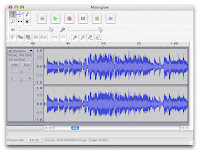 While most filmmakers strive to capture location sound cleanly and separately with a design concept for their finished soundscape, there are times when you might have to search out audio to suppliment the wild track recordings you obtain in the field. Thanks to the internet and what is known as Creative Commons, the tools and resources for filmmakers has become immensely rich.
While most filmmakers strive to capture location sound cleanly and separately with a design concept for their finished soundscape, there are times when you might have to search out audio to suppliment the wild track recordings you obtain in the field. Thanks to the internet and what is known as Creative Commons, the tools and resources for filmmakers has become immensely rich.Freesound Project has created a huge collaborative database of audio snippets, samples, recordings, and natural sounds found in nature and human-created environments. All of Freesound Project audio files are released under the Creative Commons Sampling Plus License.
Freesound Project allows you to search, sample and download (and upload) audio files to your computer and use them in accordance with Creative Commons rules. The huge database can be a tremendous resource for you in the post-production sound mix, helping you create a more realistic setting for the soundscape of your short film.
ccMixter is another excellent source of Creative Commons audio files to download, sample, cut-up, mash-up, and share but it differs from Freesound in that its primary focus is music and remixes.
And while many of you have applications you prefer to use on your computer, Audio Editors are available for download for FREE on the internet. Remember, the learning curve for mastering audio and video editing software can be long and might slow your progress in getting to the finishing line on August 15th.
Friday, June 20, 2008
Casting a ScreenLabs Challenge Short
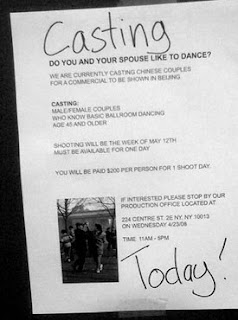
A friend in the business suggested that one of the best places to post casting call for your film might be a rehab center in L.A. or Hazelden right here in Minneapolis. Creative problem solving is the key to no budget filmmaking but let's get serious...
Today more and more indie films are using the internet to cast characters and extras. A few of those services are Now Casting and Craiglist. What can't you get on Craiglist?
You will also find organizations in the Twin Cities such as IFP Minnesota and the Minnesota Film and TV Board useful in helping you find talent and crew for your ScreenLabs Challenge production. If you contact Chris Grap at the Minnesota Film and TV Board (651) 645-3600 and ask to post a ScreenLabs call for cast and crew on their hotline, they will be happy to assist. IFP has a weekly email news called eFlash and if you call Paul Clark at (651) 644-1912 and explain you want to put out a call for crew or cast, they too will help. (Please support your local media arts organizations!)
When posting a casting call, it is very important how you explain your ScreenLabs production. First rule: Do not lie. Tell your talent exactly what the terms of your production are and what will be expected. Certainly you may pay your actors if you wish. If you explain upfront that it is an all-volunteer no budget project, make it clear how many hours, what day, morning and night call times, and transportation requirements cast members will need to follow. Tell them there will be no pay but they will get a copy of the finished short for their demo or audition reel.
Second, the more specifics you can provide will help you yield better results. If your film has a scene with a dance hall, you might do a specific call for men and women who know how to dance Flamingo. Without having to search for professional dancers, you might find really excellent extra's and have to opportunity to shoot dance scenes to weave into the texture of the passionate tangled love story you are telling.
Also, it is important to keep the number of shoot days to a minimum. You should be able to shoot a ScreenLabs project in one or two days. Longer shoots will tax the goodwill of your cast and crew and you will quickly find your production falling apart. when you post your casting call either online or on the bulletin board, provide days the cast will be needed and locations if you can.
Another local posting service you might consider is MN Talent for cast and crew. We haven't used this online service but check it out and feel free to post a comment on ScreenLabs Challenge about your experience using these services.
You might also want to check out Breakdown Services, a national casting service Breakdown Express that provides casting services but also screenplays. As these networks grow they no doubt will become more useful for those of us outside the major talent centers of New York, L.A. and Chicago but right now they don't have a breakdown for Minneapolis.
The Element of Surprise
With any kind of short story or drama, you will captivate an audience if you add the element of surpirse or confound their expectations. In conceiving your story, think of the unexpected twist or amazing event that will stand up any audience in amazement or the suspection of disbelief. This very short piece of video astonishes but yet you want to throw your suspicion out the window and rout for the ball girl. The twist is the unbelievable happens and we think we've been witness.
This is a virile media ad for Gatorade created by Chicago's Element 79 Partners and directed by Baker Smith of Harvest, Santa Monica. The stunt woman who makes the fantastic catch is Phoenix Brown who is aided by wire rigs and Framestore CFC. In fact, the wire rigs are very low tech, with two guys pulling wires from the other side of the fence to assist Brown running up the side of the wall. Smith taped the game to capture the realism of time and location. Then worked with stunt woman Brown to tape the inserts of her climbing he wall. The deep fly ball landing in her glove was added in post.
Simple Twist of Fate: BLIND FATE
Last years ScreenLabs Challenge had the theme "a simple twist of fate" and the location for shooting was the Stone Arch Bridge. One of the short films the jury and audiences so admired last year was BLIND FATE by Garth Berquist and Mark Lyons.
In a very simple fashion, Garth and Mark took the challenge to heart and wrote a tight and efficient script that simply met all the criteria. Most of the scenes in the film occur on the Stone Arch Bridge of which they made maximum and essential use in relation to the story. The bridge was a key player in the fate of the characters and the story.
And the twist was classic in their story with the reveal coming at the end. BLIND FATE took home two awards -- The Jury Prize: Runner Up and Audience Award as voted by internet viewers from all across the U.S.
Thursday, June 19, 2008
What is a character?
With the ScreenLabs Challenge you are limited to 4 characters but this doesn't mean there won't be more people appearing on the screen or that you are not allowed to use extras.
As defined in screenwriting and film parlance, a character is a person who acts or is acted upon, has intent, and makes or suffers consequences in the plot or theme of your story.
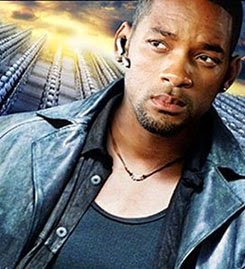 A character does not have to speak to be a character. They don't have to be human. Nor does he or she need to deliver a line in the movie. But they do need to have impact on the storyline or change the course of your screenplay.
A character does not have to speak to be a character. They don't have to be human. Nor does he or she need to deliver a line in the movie. But they do need to have impact on the storyline or change the course of your screenplay.
Here is an example: Two people are in a restaurant eating dinner with a room full of other people. The other people in the restaurant are not characters, they are extras and background to the story. The waitress comes over and takes their order and makes small talk with the lead characters.
Just speaking lines does not make the waitress a "character" even if she tells a joke. However, if the waitress goes back into the kitchen, laces the food of one of the main characters with a toxic substance or a mind-altering drug and that changes the course of the story, then the waitress is a character, because she has intent and her actions impact the story.
You are limited to 4 characters and unlimited numbers of extras or non-members. However, the purpose of the limit in this rule is to reduce your production demands and cost. Having large numbers of extras and background actors will make your production more difficult to complete.
As defined in screenwriting and film parlance, a character is a person who acts or is acted upon, has intent, and makes or suffers consequences in the plot or theme of your story.
 A character does not have to speak to be a character. They don't have to be human. Nor does he or she need to deliver a line in the movie. But they do need to have impact on the storyline or change the course of your screenplay.
A character does not have to speak to be a character. They don't have to be human. Nor does he or she need to deliver a line in the movie. But they do need to have impact on the storyline or change the course of your screenplay.Here is an example: Two people are in a restaurant eating dinner with a room full of other people. The other people in the restaurant are not characters, they are extras and background to the story. The waitress comes over and takes their order and makes small talk with the lead characters.
Just speaking lines does not make the waitress a "character" even if she tells a joke. However, if the waitress goes back into the kitchen, laces the food of one of the main characters with a toxic substance or a mind-altering drug and that changes the course of the story, then the waitress is a character, because she has intent and her actions impact the story.
You are limited to 4 characters and unlimited numbers of extras or non-members. However, the purpose of the limit in this rule is to reduce your production demands and cost. Having large numbers of extras and background actors will make your production more difficult to complete.
Power of Emotion
The most important task of making a short for the ScreenLabs Challenge is to show an audience something interesting and a story they've never seen before. And you must do it visually in a way that makes powerful in the impressions the viewer feels while watching.
If you achieve this visual impact you've got it made, regardless of whether you are shooting viral media, short highly acted dramas, comedy, or feature length films. The two reasons the above video is so successful, without words or editing, is that it makes you feel powerful sensations with every step and it repeatedly forces you to ask, "What's going to happen next?"
Wednesday, June 18, 2008
Five Tips to Make a Better Short
These five tips are frequently mentioned as defining the difference between good and bad storytelling on film or digital media.
GET GOOD AUDIO
Audio is as important, if not more than video image. Cannot emphasize this enough. Audiences watching films will gently dismiss quirks or experimentation with video grains, colorizations, treatments and even errors BUT if you mess up audio they have little or no toleration. Do not use the microphone on your consumer grade camera! Learn to capture good audio on location or collaborate with a professional location sound expert.
SHOW FACES
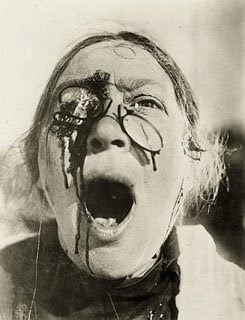 In a comedy or dramatic scenario, it is important to get faces on the screen to get inside the emotion of your story. Everybody loves to look at faces.
In a comedy or dramatic scenario, it is important to get faces on the screen to get inside the emotion of your story. Everybody loves to look at faces.
The great Russian father of film, Sergei Eisenstein with his experiments with juxtaposition, demonstrated that showing a person FACE, and then an event like in his Odessa steps sequence, evoked for an audience an emotion response to that event. Reaction shots make put the audience in the place of the character and leads them to imagine how they feel in the same situation.
All too often we find people shooting film that they are trying to cover the scene or set a shot that establishes location and it is very boring. Writers tend to want to shoot to cover dialogue and conversational interaction -- this is a mistake. Shoot to cover the human emotions and expressions inside the scene. Make sure you get significant reaction shots. Establish strong point of view (POV) with the use of camera shots of your characters and close ups and through their eye reveals.
BE BRIEF
As writers often say in the industry "Get in late, get out early" when talking about writing a scene. The surest thing to make your story uninteresting to to drag on and on and on trying to establish the scene and fail get to the point that scene is trying to deliver. Be as efficient as possible with exposition and storytelling.
GOOD LIGHTING
Knowing how to use lighting is essential. Just setting your camera up and a tripod and pushing the record button certainly is a recipe for really flat and boring images on the screen. Every shot needs to be considered and planned in advance for the effect of the lighting on the story. Lighting allows the eye to be directed and focused on where the story is, where it is going and the emotional drama of the scene.
If you don't feel you understand the science of lighting, get someone who does and is interested in lighting design. Knowing and using concepts like three point lighting, key lights, fill lights, soft light, hard light filters or knowing how to use natural light during mood moments of the day and the science of bouncing light, using flags and defusers if you are going entirely with a "natural light look" is criticala to building a visual style to match your dramatic and comic story.
AVOID DISTRACTING TECHNICAL NOISE
If you watch videos on YouTube or Google Video you quickly start to notice why things fail and why things work. One of the repeating mistakes of so many videos on these channels, and a common mistake for amateurs, is going off message or away from the story because of technical noise. Most commonly, when the camera is jerking around and constantly gyrating for no useful reason, we stop looking at the action, the characters and the story and start watching the irritation.
Think of it as a fly in the room. All of a sudden its buzzing next to your ear (audio) or circling next to your face (picture). Immediately, you stop looking and the beautiful scene on the lake, or the nice plate of food or the beautiful people around you in interesting conversation because the fly is an overwhelming distraction. I see this all the time on YouTube and most anyone in this rapid info and image age turns it off quickly in favor of less noisy transmissions of information or story.
GET GOOD AUDIO
Audio is as important, if not more than video image. Cannot emphasize this enough. Audiences watching films will gently dismiss quirks or experimentation with video grains, colorizations, treatments and even errors BUT if you mess up audio they have little or no toleration. Do not use the microphone on your consumer grade camera! Learn to capture good audio on location or collaborate with a professional location sound expert.
SHOW FACES
 In a comedy or dramatic scenario, it is important to get faces on the screen to get inside the emotion of your story. Everybody loves to look at faces.
In a comedy or dramatic scenario, it is important to get faces on the screen to get inside the emotion of your story. Everybody loves to look at faces. The great Russian father of film, Sergei Eisenstein with his experiments with juxtaposition, demonstrated that showing a person FACE, and then an event like in his Odessa steps sequence, evoked for an audience an emotion response to that event. Reaction shots make put the audience in the place of the character and leads them to imagine how they feel in the same situation.
All too often we find people shooting film that they are trying to cover the scene or set a shot that establishes location and it is very boring. Writers tend to want to shoot to cover dialogue and conversational interaction -- this is a mistake. Shoot to cover the human emotions and expressions inside the scene. Make sure you get significant reaction shots. Establish strong point of view (POV) with the use of camera shots of your characters and close ups and through their eye reveals.
BE BRIEF
As writers often say in the industry "Get in late, get out early" when talking about writing a scene. The surest thing to make your story uninteresting to to drag on and on and on trying to establish the scene and fail get to the point that scene is trying to deliver. Be as efficient as possible with exposition and storytelling.
GOOD LIGHTING
Knowing how to use lighting is essential. Just setting your camera up and a tripod and pushing the record button certainly is a recipe for really flat and boring images on the screen. Every shot needs to be considered and planned in advance for the effect of the lighting on the story. Lighting allows the eye to be directed and focused on where the story is, where it is going and the emotional drama of the scene.
If you don't feel you understand the science of lighting, get someone who does and is interested in lighting design. Knowing and using concepts like three point lighting, key lights, fill lights, soft light, hard light filters or knowing how to use natural light during mood moments of the day and the science of bouncing light, using flags and defusers if you are going entirely with a "natural light look" is criticala to building a visual style to match your dramatic and comic story.
AVOID DISTRACTING TECHNICAL NOISE
If you watch videos on YouTube or Google Video you quickly start to notice why things fail and why things work. One of the repeating mistakes of so many videos on these channels, and a common mistake for amateurs, is going off message or away from the story because of technical noise. Most commonly, when the camera is jerking around and constantly gyrating for no useful reason, we stop looking at the action, the characters and the story and start watching the irritation.
Think of it as a fly in the room. All of a sudden its buzzing next to your ear (audio) or circling next to your face (picture). Immediately, you stop looking and the beautiful scene on the lake, or the nice plate of food or the beautiful people around you in interesting conversation because the fly is an overwhelming distraction. I see this all the time on YouTube and most anyone in this rapid info and image age turns it off quickly in favor of less noisy transmissions of information or story.
Monday, June 2, 2008
Making Art Without Permits
It happens all the time. People exercising their creative freedom but still using common sense and a proper respect for neighbors and collaborators go into public parks and shoot their footage without a government issued permit. Part of the ScreenLabs Challenge is to figure out how to use the location in Prospect Park, Minneapolis near the Witches Hat Water Tower. It is all in the craft of being resourceful and, don't forget tactful and diplomatic - a skill essential to being a filmmaker.
Unless you are obstructing traffic, being a nuisance to the neighborhood, using pyrotechnics, or engaged in illegal activity like public nudity or welding a firearm, it isn't likely that anyone will say or do anything to stop you from shooting. Police enforcement is not focused on stopping average citizens (and think of yourself as average) from video taping in public parks. Public spaces are meant for public use. There are no laws that say you cannot run a video camera in a public park. In the past 25 years we've never been forced to pay for a public permit to shoot a Screenlabs production and I've on a number of commercial and journalist shoots that didn't use a permit in public spaces. This is all a part of the challenge. If you want to pay for permits you are welcome.
For good reasons. cities and parks will require permits for circumstances that dramatically impact or preclude other users of public property. This is a common decency you should respect. Be mindful of equipment format: Choose camera and equipment type, such as cranes, rain towers, dolly track, etc, that will NOT impede use of sidewalks or roadways. Do not bring grip and equipment trucks on location. And, it is probably best not to use even a tripod. If your gear footprint resembles that of a tourist shooting a home movie -- all the better.
Keep the number of crew people involved in the shoot for that particular location to a minimum including production personnel, cast members and extras. Parking is a consideration that should be closely monitored as to not congest the streets and drawn undue attention to your shoot. Remember, you can always shoot b-roll with just a barebones, shake and bake crew and leave all the PAs, assistants, script continuity and excess crew out. If you plan ahead you can use a stripped down crew.
Most importantly, if you try to "act like" professionals and use arrogance when dealing with either the police or general public you will get tossed out. If you interfere with and fail to respect other public uses you will get tossed out. And if you overstay your welcome you will be tossed out.
The artists from Improv Everywhere, a New York public performance art group, have managed a very complicated take-over of Grand Central Station in New York by a flash mob and using digital video, have documented a large scale performance piece with a couple of hundred extra's and wired principle performers. And they are able to do it with high quality, good audio and excellent lighting due to the portability of modern digital video equipment. They didn't have a permit and that is a lot more difficult in Grand Central Station than anywhere in Minnesota.
And if you do it right, you'll leave people amazed and maybe even applauding as you walk away.
Labels:
Location,
Prospect Park,
Witches Hat Water Tower
Friday, May 23, 2008
Image Over Words
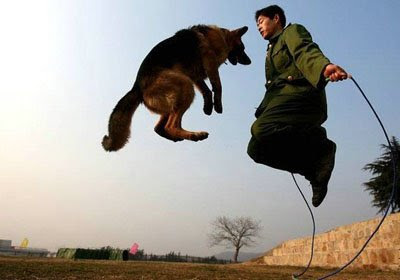
Storytelling with images must be as strong as your script -- plot, dramatic arch and dialogue. Film is a highly visual medium and because the camera was invented to be mobile and has become increasingly moreso as the technology has evolved --use its compactness and mobility to your advantage. As much time as a writer spends on writing, analyzing and rewriting their script, also the artistic team (director, cinematographer, lighting, art director, location manager, wardrobe) should spend pre-visualizing, sketching, and compositing each scene of the short film.
The low angle of the shot above with the dog and man rope jumping in unison makes the act more powerful and impactful. When both the man and certainly the dog rise above the mid-screen line, we feel their effort has been fair more significant than if we we view them from eye level with the horizon above mid-frame. These are important ways to think about your shots and each one is a unique and interesting challenge.
In film courses students are taught how to tell story without words, narration, or verbal exposition. Visual storytelling engages the audience more profoundly than hearing it told by a character or in narration. In every scene, the director, writer and cinematographer need to create the most powerful visual significance to propel emotion, circumstance, and predicament.
 Try to avoid static horizon/ground shots all the time where is camera is on a tripod pointing straightforward, or held at eye height looking at your actors. Think and plan for over head shots, low angels, high angels and camera movement that contribute to telling the story and not just added as an after-thought. Create wonderment and excitement within your frame and build it throughout scenes.
Try to avoid static horizon/ground shots all the time where is camera is on a tripod pointing straightforward, or held at eye height looking at your actors. Think and plan for over head shots, low angels, high angels and camera movement that contribute to telling the story and not just added as an after-thought. Create wonderment and excitement within your frame and build it throughout scenes.Challenge yourself to provide visually stimulating diversity. Take your audiences to places they've never been before with visual perspectives they don't often reach. They will thank you for it and enjoy your film much more immensely.
Tuesday, May 20, 2008
3-Point Lighting
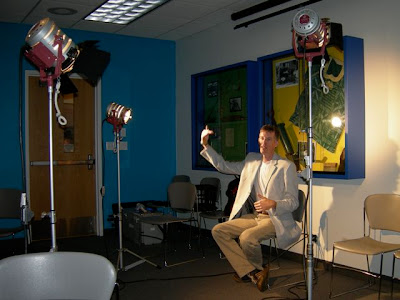
Chris Mick, the former equipment manager for IFP Minnesota and Producer at 355 Productions explains how to put lighting into your short drama in order to achieve an effect and mood to match the story. Lighting can be one of the single biggest factors that will separate your film from amateur home movies.
Properly lighting using 3 lights can assure you are able to get clear and true skin tones, a well rounded depth surrounding your actors, separation between the focal plane and the background and foreground that directs the eye for dramatic impact. Lighting, if done properly, can immediately raise the production quality of your film and that's what you need to get recognized in this contest as well as for future projects you want to make as an indie or in Hollywood.
With home movies a videographer often relies on available light or a lighting scheme that uniformly lights everything exactly the same regardless of where you want to viewer to focus their attention. This undirected light scheme makes movies flat, boring and tiresome to watch.
The inability to design with light is immediately recognizable as amateur by judges and the general audience alike. If you find a professional lighting designer or have a camera operator who is aware of how to compose both with light as well as framing and object composition you'll be way ahead of all the rest in this storytelling challenge.
 IFP Minnesota rents three-point light packages by the day or weekend at really low cost to local independent filmmakers. Also, if you can get a group of five people or more together, IFP will bring a trainer like Chris Mick in for a topical class on lighting, location sound, or camera framing and composition. These technical services can be an invaluable resource to not only this Screenlabs Challenge 2008 production but your future career in filmmaking.
IFP Minnesota rents three-point light packages by the day or weekend at really low cost to local independent filmmakers. Also, if you can get a group of five people or more together, IFP will bring a trainer like Chris Mick in for a topical class on lighting, location sound, or camera framing and composition. These technical services can be an invaluable resource to not only this Screenlabs Challenge 2008 production but your future career in filmmaking.
Labels:
IFP Minnesota,
Lighting,
Motivation with Light
Subscribe to:
Posts (Atom)



